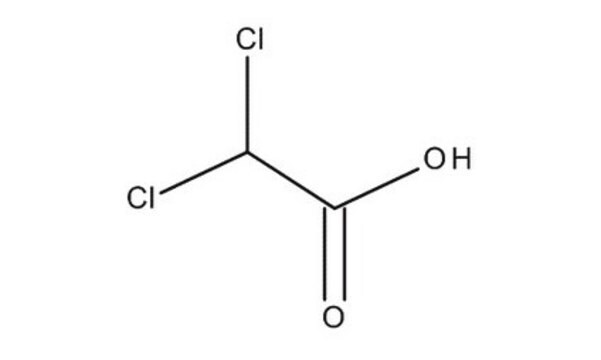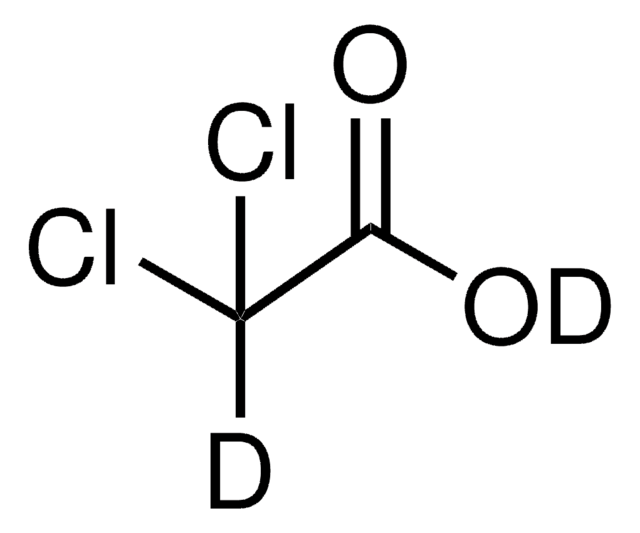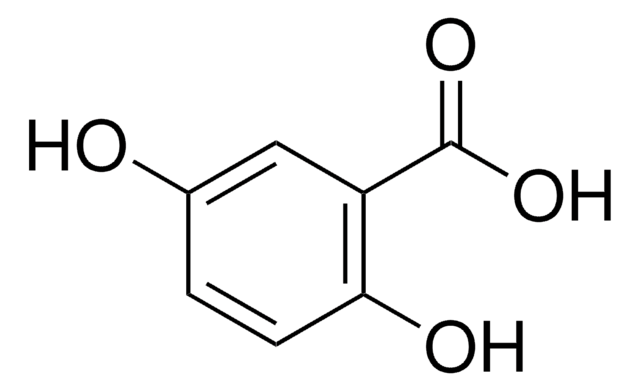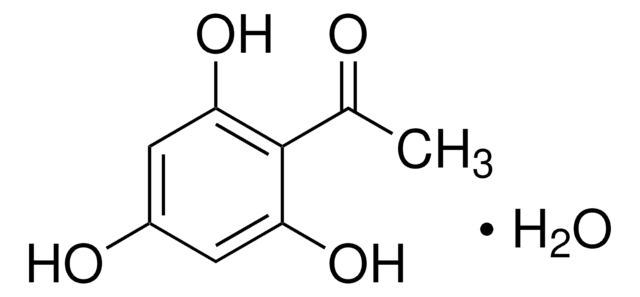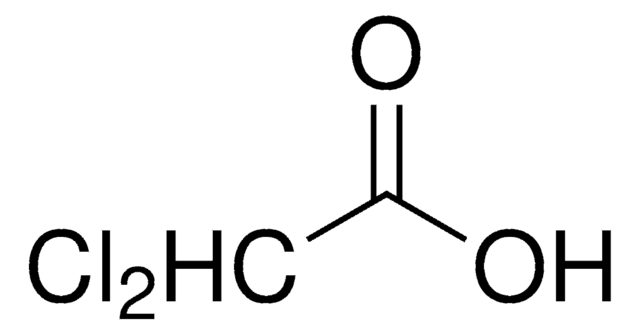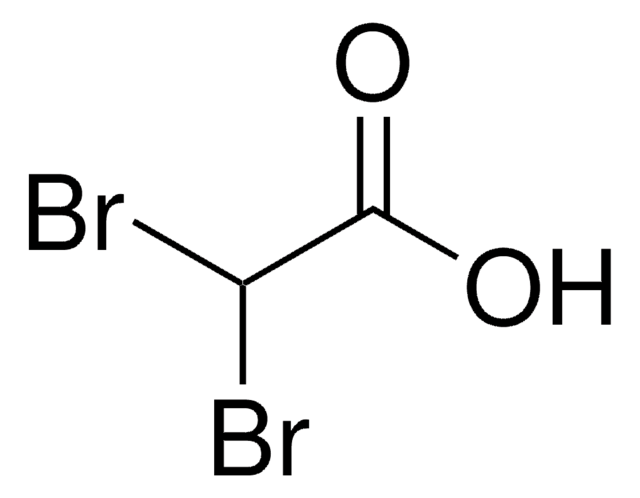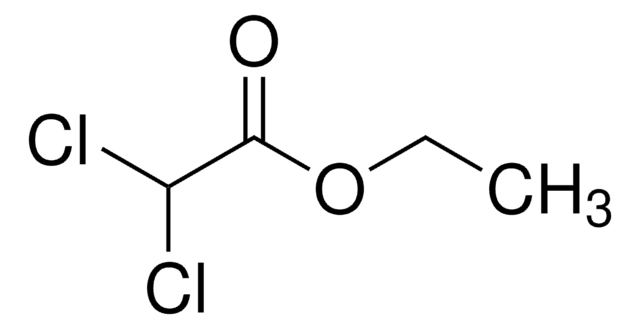D54702
Dichloroacetic acid
ReagentPlus®, ≥99%
Synonym(s):
2,2-Dichloroacetic acid, DCA, DCAA
About This Item
Recommended Products
vapor density
4.5 (vs air)
Quality Level
vapor pressure
0.19 mmHg ( 20 °C)
product line
ReagentPlus®
assay
≥99%
form
liquid
refractive index
n20/D 1.466 (lit.)
bp
194 °C (lit.)
mp
9-11 °C (lit.)
density
1.563 g/mL at 25 °C (lit.)
functional group
carboxylic acid
chloro
storage temp.
2-8°C
SMILES string
OC(=O)C(Cl)Cl
InChI
1S/C2H2Cl2O2/c3-1(4)2(5)6/h1H,(H,5,6)
InChI key
JXTHNDFMNIQAHM-UHFFFAOYSA-N
Gene Information
human ... ALDH1A1(216) , PDK1(5163)
rat ... Pdk1(116551)
Looking for similar products? Visit Product Comparison Guide
Related Categories
General description
Application
- A reactant in the synthesis of chloroketones by reacting with esters in the presence of LiHMDS via Claisen-type homologation reaction.
- A structure-directing agent, solvent, or plastdopant for the preparation of different morphologies of polyaniline (PANI). Self-assembling nanostructured PANI may be formed due to the presence of strong hydrogen bonding between DCA and aniline/polyaniline.
Legal Information
signalword
Danger
Hazard Classifications
Acute Tox. 3 Dermal - Aquatic Acute 1 - Carc. 2 - Eye Dam. 1 - Lact. - Met. Corr. 1 - Repr. 1B - Skin Corr. 1A - STOT RE 2 Oral
target_organs
Brain,Liver,Testes
supp_hazards
Storage Class
6.1C - Combustible acute toxic Cat.3 / toxic compounds or compounds which causing chronic effects
wgk_germany
WGK 3
flash_point_f
235.4 °F - closed cup
flash_point_c
113 °C - closed cup
ppe
Faceshields, Gloves, Goggles, type ABEK (EN14387) respirator filter
Choose from one of the most recent versions:
Already Own This Product?
Find documentation for the products that you have recently purchased in the Document Library.
Customers Also Viewed
Articles
We presents an article about the Warburg effect, and how it is the enhanced conversion of glucose to lactate observed in tumor cells, even in the presence of normal levels of oxygen. Otto Heinrich Warburg demonstrated in 1924 that cancer cells show an increased dependence on glycolysis to meet their energy needs, regardless of whether they were well-oxygenated or not.
Our team of scientists has experience in all areas of research including Life Science, Material Science, Chemical Synthesis, Chromatography, Analytical and many others.
Contact Technical Service